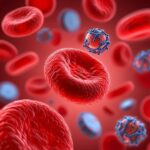A team of scientists in Leipzig may have found a way to keep bones stronger for longer — and even reverse osteoporosis. Their research centers on a little-known receptor called GPR133 and a compound named AP503, which together show remarkable potential for protecting bone health.
Osteoporosis is a common condition that weakens bones, affecting around six million people in Germany alone, most of them women. Current medications can help, but they often bring unwanted side effects. That’s why the Leipzig team’s findings are so exciting. “If this receptor is impaired by genetic changes, mice show signs of loss of bone density at an early age, similar to osteoporosis in humans. Using the substance AP503, which was only recently identified via a computer-assisted screen as a stimulator of GPR133, we were able to significantly increase bone strength in both healthy and osteoporotic mice,” explained Professor Ines Liebscher.
Normally, GPR133 responds to signals from neighboring bone cells and everyday movement. This process activates bone-building cells while slowing down the ones that break bone apart. AP503 is able to copy this natural signal, making bones stronger and more resilient.
The discovery could be especially important for women after menopause, when bone loss accelerates. As Dr Juliane Lehmann put it, “The newly demonstrated parallel strengthening of bone once again highlights the great potential this receptor holds for medical applications in an aging population.”






